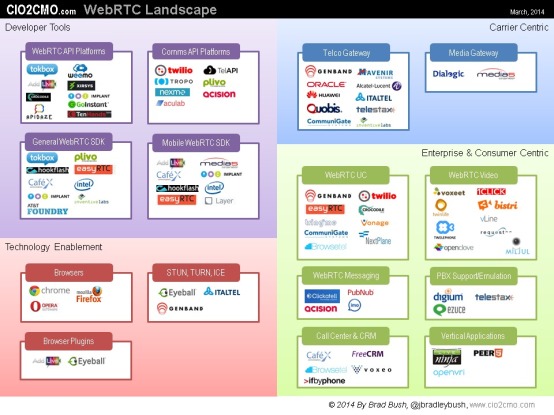Today (June 12) marks the completion of 3 months since we launched the free Miljul Web app. During these 3 months, we did two iterations of the app, made a few mistakes, and are now wiser for the experience.

Miljul has been used for over 4000 calls in these 3 months, and for a fledgling start-up with no budget for marketing, this is not bad. We are still very much unknown in the market, but we know our time will come. Importantly, we now have data about these calls, the snags people may have faced while using Miljul, and critically we have a handle on how much would it cost us to give the service free.
And so, we decided to give ourselves a few questions to answer. Some of the questions are what ‘potential mentors’ have asked us and some we wish they’d asked us or that a journalist would ask us 🙂
Is Miljul still in beta?
Yes, our philosophy is that we are in perpetual beta. We will keep improving the app and adding more features.
Who has been using Miljul?
A good number of our visitors have come from places we never thought would be possible for us to reach. Of all the users since release, 70% are from India and US. This is not surprising. Most of our network lives in these two countries. The few calls from UK, UAE etc, can also be attributed to our network effect.
But what explains users coming from Ivory Coast, Costarica, Nigeria, Tanzania, and the significant number of calls from Russia and other East European countries? We have users accessing the service from Mongolia, South Korea, and of course China as well. And we have a mobile responsive site. No mobile apps yet.
Our initial thinking was that we are doing a bit of Twitter marketing and basic SEO stuff, and that is probably driving app developer traffic from some of these countries to simply check out what we have done with WebRTC. And that this traffic would end once those developers see that we just have a simple video calling Web app – there are dozens of such Web apps by now in US and EU, and every expert says this space is saturated. (The experts recommend that we find a niche business process that could be disrupted with the addition of browser based video communication.)
We still don’t know why we are getting so many users from Africa and Eastern Europe. We hope they are finding Miljul useful. These unknown users are helping us keep faith in what we are doing. Big thanks!
So, what are you guys at Miljul trying to do?
Our vision is to bring technology within the reach of people, for social and business impact. Our current mission is WebRTC-powered video communication for online professional services.
The free Miljul Web app is the first step in that direction – allowing us to chart a course with the help of data.
We are working on adding the features that would make Miljul a complete suite of tools for personal and business communication, covering multiple contexts. Our focus is on building a set of compelling user experiences that will make Miljul the preferred choice for professionals who want to video enable their business or services.
Can you explain a bit more?
Sure. Sriram is an investment adviser, and helps his clientele (mostly individuals/couples, urban professionals) manage their stocks, mutual fund investments, insurance policies, and fixed deposits. All these activities involve a lot of paperwork. Sriram and his team are on the ‘field’ most of the day, visiting people at their offices, coffee shops, or at homes – to give advice, collect cheques, and complete the paperwork. There are times when his clients visit Sriram’s office to complete the work, and this involves a lot of planning on their part, including taking a few hours or even a day off.
Miljul wants to solve Sriram’s pain. Using Miljul, Sriram and his clients can connect via live video call, review and complete the documents, and exchange signed documents. They save on travel time, fuel costs, and still benefit from face to face communication. If Sriram wishes so, he can add the Miljul widget to his business web site/profile page. He can record his answers to the FAQs on a particular investment opportunity – and share the video link with his clients. Sriram can offer paid advisory sessions charging a per hour rate. Instead of spending time waiting in the living rooms of his clients, he can use the time to grow his business. Sriram’s clients will know that he is just a video call away, and that a task that should take only 10-15 minutes, will not require a 2 hour break from work.
Don’t we have Skype, Google Hangouts etc. already?
Yes, we have them, but these tools are generic and have a walled garden approach. If Sriram wants to do Skype with his client, they both need to have Skype Ids (forced to have Microsoft Ids actually), install the Skype software, and add each other as contacts. That’s just the beginning. Features like screen share, file transfer, call recording, cloud video storage and on-demand streaming- have either limitations (screen share possible only in 1-on-1 video calls on Skype), or require multi-tasking between different apps in the walled garden. Skype is a trailblazer and enormously successful, but needs to adapt to the new demands from the market. Google Hangouts is a great tool (Helpouts was even better!), but is again a standalone tool.
So, Miljul wants to be a market place for professionals?
Yes, and No. Miljul is focused on bringing the various features needed for multiple contexts together, so that users can choose the feature they need, when they need, all from within a single Web/mobile app. Most of the features will be free- and we expect to charge some amount for premium features. We want people to use our widget/s. We also want to help businesses embed RTC in their processes. We are currently working on an exciting idea in the health care domain with another start-up. We want non-profit organizations to benefit from Miljul and so, willing to build for free or very low cost custom solutions for NGOs working in agriculture, education, conservation etc.
At some point, if we need to pivot towards becoming a market place, we are open to that direction. Right now, our focus is on getting the features to work together and making it a stable product.
Which other professions have you thought of?
What works for investment advisers, would also typically work for Chartered Accountants, Auditors, Lawyers and the like. Teachers will need a white board in addition (so, everyone gets the feature!); Recruiters may use the recording function more and so, will need a dashboard definitely to track all the interview sessions they do. And so on. Personally, the idea of learning music or a language online through a personal tutor appeals a lot to us. But music and language teachers will probably need some additional features, including a knowledge base that students can access. Such ideas lend themselves better in a market place scenario, because we would also need to bring the students to these teachers. Boutique fashion designers, chefs, personal trainers, management consultants, spiritual Gurus – anyone should be able to use Miljul premium features and enhance their reach.
What has been your biggest challenge?
Talent – identifying the right talent, trying to get them interested in what we are doing, and on boarding them. In spite of the many start-up hiring events and portals, it is still not an easy task to build the kind of team we want. We continue to look for exceptional talent to join us.
When are you planning to go live with all these premium/paid features?
We are targeting end July. Watch this space!
Sounds like a plan. No dreams of becoming a WebRTC API Platform as Service provider?
Like Twilio and Tokbox?
Yes.
Ok, we definitely feel that the Indian market needs someone like Twilio or Tokbox to spread the awareness among developers and businesses –and make WebRTC proliferate. The space is wide open, and traditional telcos seem to be fighting against the trend (net neutrality debate) than leading the change. In parallel, these telcos have also launched OTT services (Hike, Jio chat) or tying up with technology start-ups from North America to help move into the WebRTC area (Tata).
The big communications API PaaS providers in US/EU have their hands full with the number of validated use cases (customer support, health care, education, unified communications etc.) they need to support, the platform evangelism, plus the key role they play in evolving the standards for WebRTC/ORTC. These providers have everything in place that an app developer in India or elsewhere from the developing world would need. May be we need a few more data centres in India, but apps running on AWS from Singapore are doing just fine.
Miljul or any other WebRTC company in India can evolve into a major WebRTC API PaaS provider serving mostly South East Asian businesses. The market can definitely support both the major global players, and upcoming local players. As far as we are concerned, we would first like to try out Twilio properly, and figure for ourselves whether there is a need to do something specific for Indian market demands.
What could happen – is that one of the telecom majors in India would tie-up with a Twilio or Tokbox- and offer complete app development environments- APIs, cloud infrastructure, and the telecom backbone. Or they may build the API platform in house, and do it on their own. But we doubt it. Telcos are by nature rent seeking entities, and not setup for building innovative new technologies. They will typically wait for companies to emerge and then back themselves to buy their way through.
Miljul is not thinking of being an API provider at all as of now. But we are part of the ecosystem and very interested in how things are evolving. We hope to do our bit and help people and businesses. The future looks exciting.
Good luck.
Thanks. Once again, a big thank you to all our users! You are making it possible for us to be on this journey.

